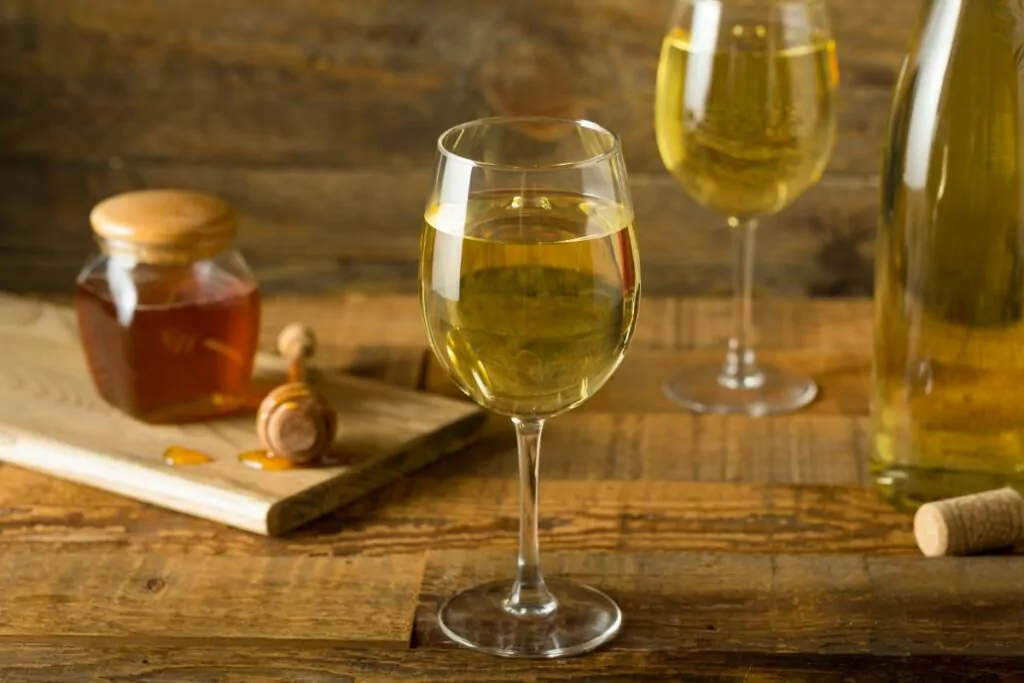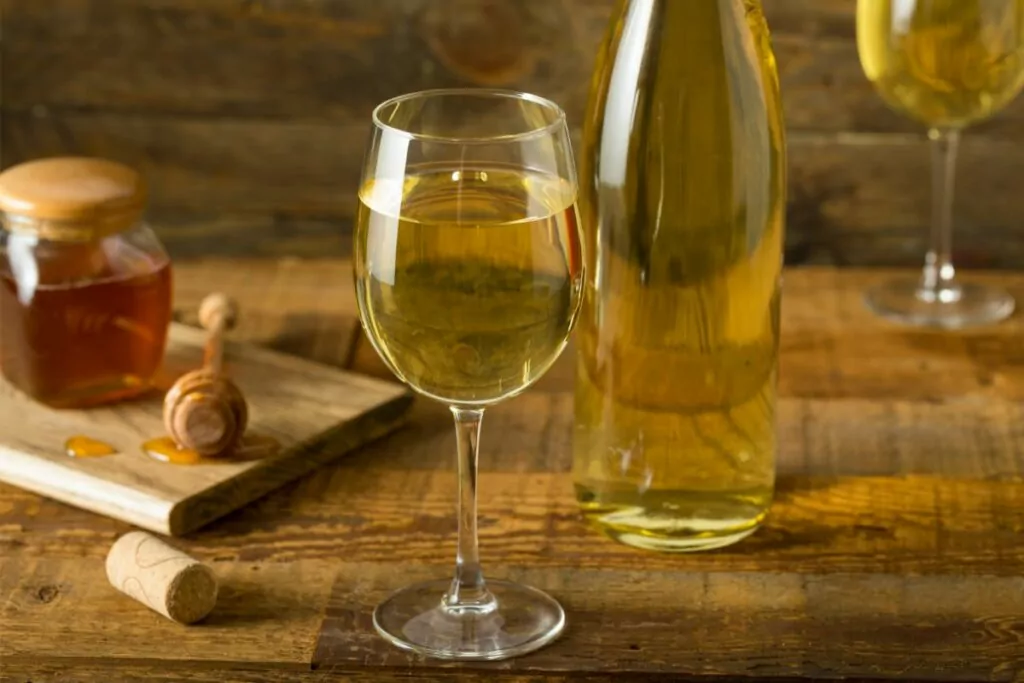Mead is an alcoholic beverage made from fermented honey and water, with a variety of additional ingredients such as spices, herbs, fruits, and grains.

This unique beverage has been enjoyed for centuries across many cultures, but one common question is whether mead is carbonated.
The answer to this question is not as simple as it may seem; some mead is carbonated, while others are not.
Is Mead Actually Carbonated?
Mead is an ancient beverage that dates back thousands of years and still holds a prominent role in many cultures across the world. It can be carbonated, but it depends on the type of mead being produced.
During the initial fermentation process, mead begins to take on carbon dioxide as it undergoes its transformation from sweet honey water into alcohol.
As the fermentation process continues and the mead starts to age, the CO2 naturally gets released and causes the mead to become still.
Once finished, you can place all of these ingredients into bottles via bottle conditioning so that bubbles form when drinking it.
Therefore, while not all mead is carbonated, those that do choose this route have a steady supply of added fizz when consumed in its intended form.
How Exactly Can You Carbonate Mead?

Carbonated mead is a delicious beverage that has been around for centuries. It is often enjoyed during celebrations due to its refreshing and pleasant taste.
This traditional drink needs the right ingredients and processing techniques in order to be carbonated properly.
- The process begins with the selection of high-quality honey, as this is the main ingredient used in creating mead.
- Once the honey has been selected, it should be blended with various yeasts and additional organic ingredients such as fruits or spices.
- The mixture must then be placed in an air-sealed container, which will enable carbon dioxide to become trapped during fermentation.
- The mead must then be left to ferment over several weeks until it reaches the desired level of carbonation.
- Finally, once it is ready for consumption, you can use specialized equipment to increase or decrease the level of carbonation depending on your preference.
- You can also add a bit of extra sweetness by adding a few tablespoons of sugar or honey into the mixture before sealing it off again and leaving it for an additional week or two so that flavors have time to marry together nicely before serving.
Carbonating your own mead requires patience, but with practice, you will master a skill that will provide you and others with an excellent sparkling alcoholic delight! So, let’s have an in-depth look into the steps involved.
Start With Your Mead
When it comes to creating your own carbonated mead, the first and most important step is selecting the correct type of mead. When you’re looking at different types of mead, try to focus on lighter varieties.
This will help bring out the effervescent qualities of your drink and allow it to stand out. Lighter variations will also bring out other flavors often subtle in darker brews, highlighting more nuanced aromas and tastes.
Preparing Your Mead
Brewing mead is a complex process, but the reward can be incredibly satisfying. Through traditional fermentation, it takes time to create the perfect sparkling mead.
- The first step in the process is making sure all the ingredients are measured accurately and included in the mixture. It’s essential that everything comes together for an even-tasting and uniform sparkling product.
- Once the mixture has been created, it needs to be given ample fermentation time for each step of the journey.
- This is where having patience pays off; because if you skip any part of this crucial step in the mead brewing process, then consistency in your finished sparkling mead will not occur.
Adding Honey
The addition of honey to mead is a crucial step in the process and must be carried out with precision in order to achieve high-quality results.
Before adding the honey, all equipment should be clean, sterilized, and ready to go.
Raw honey is ideal for providing a more authentic tasting mead, so buyers should always check the label of whatever honey they purchase to confirm its quality.
It must also be stored at room temperature until use to ensure the best performance.
Once the raw honey has been added to the mead, it should be thoroughly stirred with a spoon or paddle. This will incorporate it evenly into the solution, ensuring that its flavors are conveyed throughout.
Bottling Your Mead
Bottling the mead is a process that requires great care and precision. This begins when the honey and mead are poured into a champagne bottle.
Doing so creates the perfect mixture of ingredients required for an amazing beverage.
Keeping It In A Dark And Warm Environment
The ideal temperature for this is room temperature – any higher, and it can cause the carbonation to become more evident too early on in the process, which might cause bottles to shatter.
When keeping the mead in a warm and dark space, it’s important that all bottles are placed safely because they contain pressurized gas.
Final Thoughts
No, mead is not carbonated. Carbonation is typically added after fermentation has occurred in order to give the beverage a sparkling quality.
However, adding honey during the brewing process can create a natural carbonation that bubbles up when exposed to heat.
Each step of the mead-making process needs to be carefully and accurately executed in order to achieve the perfect beverage.
Frequently Asked Questions
The length of time mead will last depends on whether it is opened or unopened. Unopened mead can last for years and even decades due to the preservatives in honey.
Once opened, though, the mead returns to its natural condition (likely less carbonated) and thus begins to spoil more quickly – generally lasting for a couple of months if kept properly chilled and sealed in an airtight container.
In general, the taste of mead can be described as a cross between wine and honey with a sweet, slightly floral flavor.
Some varieties might be more fruity or dry, while others may have hints of spices like cinnamon or ginger added to them.
- StockHouseBrewing.com is being acquired by MomentumBrewHouse.com - October 24, 2023
- MomentumBrewHouse.com Acquires EmpiricalBrewery.com - August 31, 2023
- How Many Calories Are In A Bottle Of Beer? - May 24, 2023
